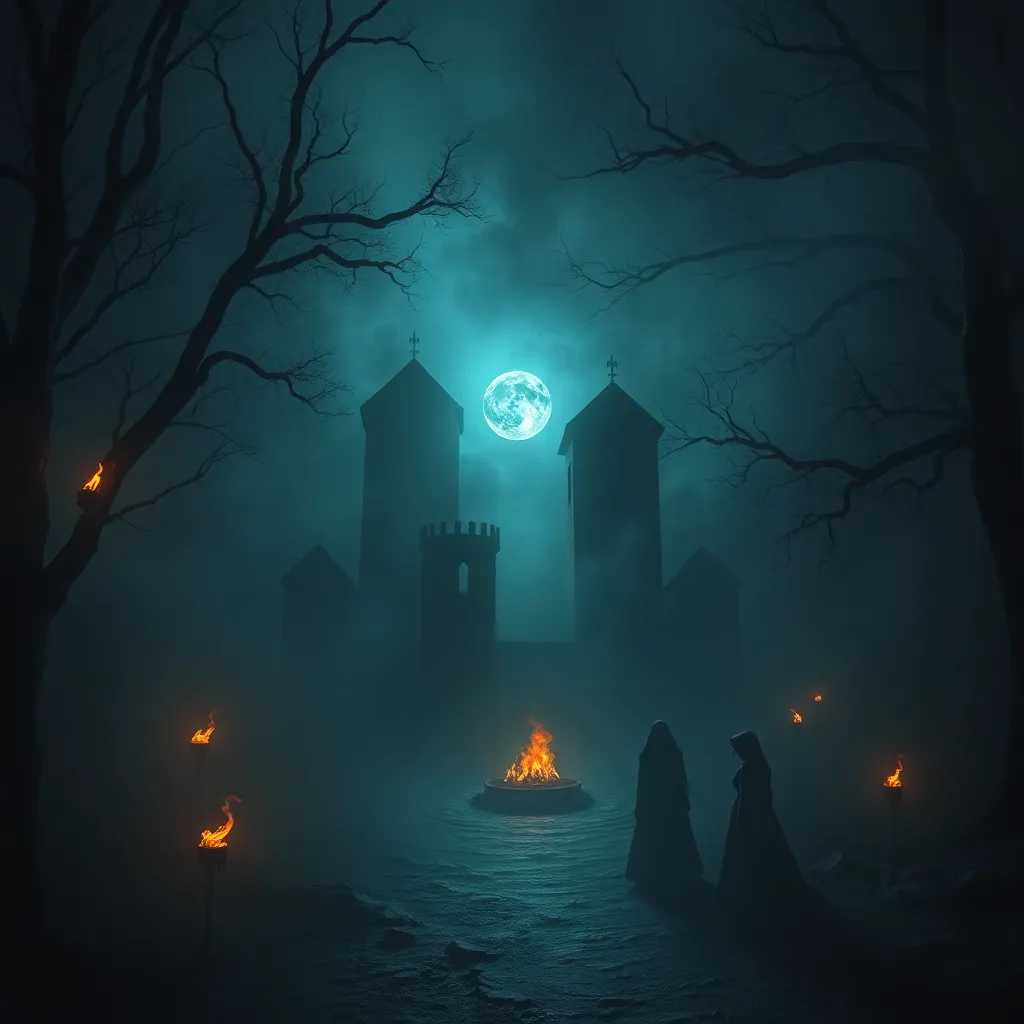The Legend of the Giant of Glastonbury Tor: A British Folktale
I. Introduction
Glastonbury Tor, a majestic hill topped with the ruins of St. Michael’s Tower, stands as a prominent landmark in Somerset, England. This ancient site is steeped in history and has long been associated with a rich tapestry of folklore that resonates deeply within British culture.
Folklore serves as a vital thread in the fabric of British identity, encapsulating the values, beliefs, and traditions of its people. Among the myriad of tales, the legend of the Giant of Glastonbury Tor shines brightly, embodying themes of strength, bravery, and the connection between the earthly and the mystical.
II. Historical Context of Glastonbury
The history of Glastonbury Tor stretches back thousands of years, with evidence of early settlements and sacred rituals. Archaeological findings suggest that the hill was a significant site for prehistoric communities, possibly serving as a burial ground or a place of worship.
Glastonbury has long been intertwined with myth and legend, becoming a focal point for both Celtic and Christian traditions. The area’s association with King Arthur and the Isle of Avalon adds layers of intrigue, weaving together stories of heroism and the supernatural that have captivated imaginations for generations.
III. The Giant of Glastonbury: A Brief Description
The Giant of Glastonbury is often described as a formidable figure, towering over the landscape and possessing immense strength. His character embodies the archetype of the benevolent giant—one who protects the land and its people.
The origins of the Giant’s legend are shrouded in mystery, with various accounts suggesting he may have been a guardian spirit of Glastonbury Tor or a fallen hero from ancient battles. Symbolically, the Giant represents the deep connection between nature and humanity, illustrating the harmony that can exist when one respects the land.
IV. The Story of the Giant
The tale begins with the Giant’s arrival at Glastonbury Tor, where he is said to have descended from the clouds to protect the valley below. His presence was felt throughout the land, bringing prosperity and safety to its inhabitants.
Key events in the Giant’s life include:
- Defending the villagers from marauding invaders.
- Assisting in the construction of sacred sites and structures.
- Engaging in playful contests with local children, showcasing his kindness.
Interactions with local inhabitants were marked by mutual respect and admiration. The Giant often shared wisdom with the villagers, guiding them in their agricultural practices and helping them to thrive. He even formed friendships with other mythical beings, such as faeries and woodland spirits, further enriching the tapestry of stories surrounding Glastonbury.
V. Themes and Morals of the Folktale
The legend of the Giant of Glastonbury encapsulates several profound themes:
- Bravery: The Giant’s courage in defending his home serves as an inspiration for standing up against adversity.
- Strength: His physical prowess symbolizes not only physical strength but also the strength of character and community.
- Kindness: The Giant’s benevolence towards the villagers teaches the importance of compassion and generosity.
These themes convey moral lessons that resonate deeply within British folklore. They remind us that true strength lies not just in power, but in the ability to protect and nurture those around us.
VI. The Giant in Contemporary Culture
The legend of the Giant of Glastonbury continues to influence modern storytelling in various forms. Adaptations of the tale can be found in literature, film, and art, often portraying the Giant as a symbol of hope and resilience.
In addition, the Giant plays a significant role in Glastonbury’s tourism. Events celebrating the legend, such as festivals and guided tours, draw visitors eager to learn about the rich folklore of the area. These activities help to keep the story alive, ensuring that the Giant remains a beloved figure in the collective memory of the community.
VII. The Legend’s Legacy
The preservation of the Giant’s tale through oral tradition has been crucial in maintaining its relevance. Storytellers pass down the legend from generation to generation, enriching it with new interpretations while honoring its roots.
The Giant’s legend has also impacted local identity, fostering a sense of pride among residents of Glastonbury. The story serves as a reminder of their unique heritage and the importance of community.
When compared to other folktales of giants in British folklore, the Giant of Glastonbury stands out due to his dual nature as both a protector and a friend to the people, showcasing a more wholesome and nurturing portrayal of giant mythology.
VIII. Conclusion
In reflection, the enduring nature of the Giant’s legend speaks volumes about the power of folklore in shaping cultural heritage. Tales such as these remind us of our shared values and the lessons embedded in our history.
The Giant of Glastonbury Tor occupies a cherished place in British mythology, symbolizing strength, kindness, and the connection between humanity and nature. As we continue to explore and celebrate these stories, we honor the traditions that have shaped our identities and inspired generations to come.



